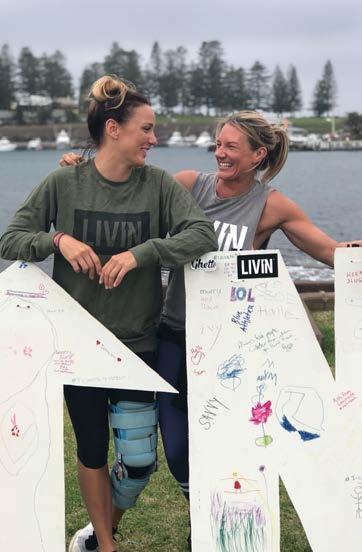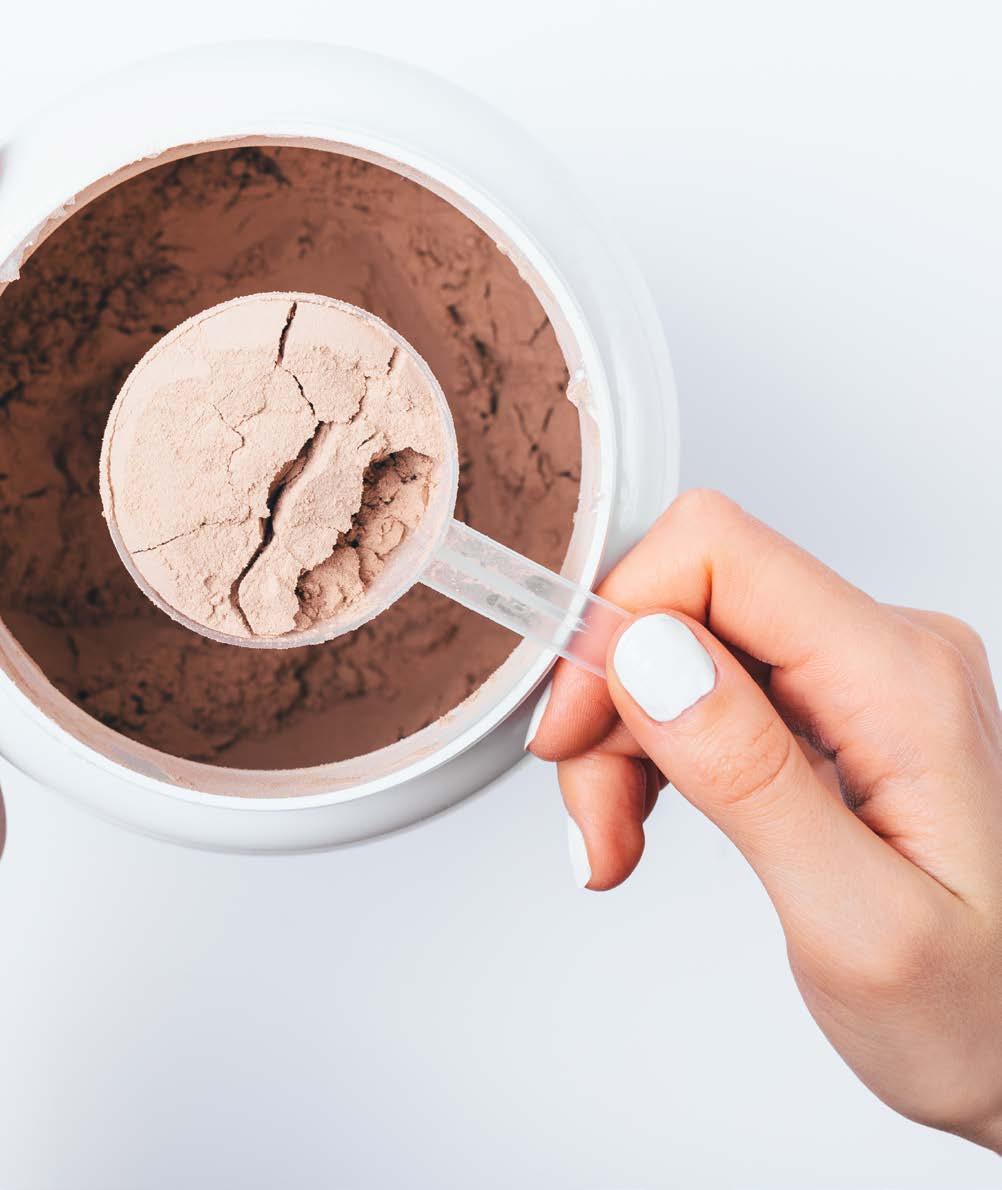
26 minute read
The Supplement Edge

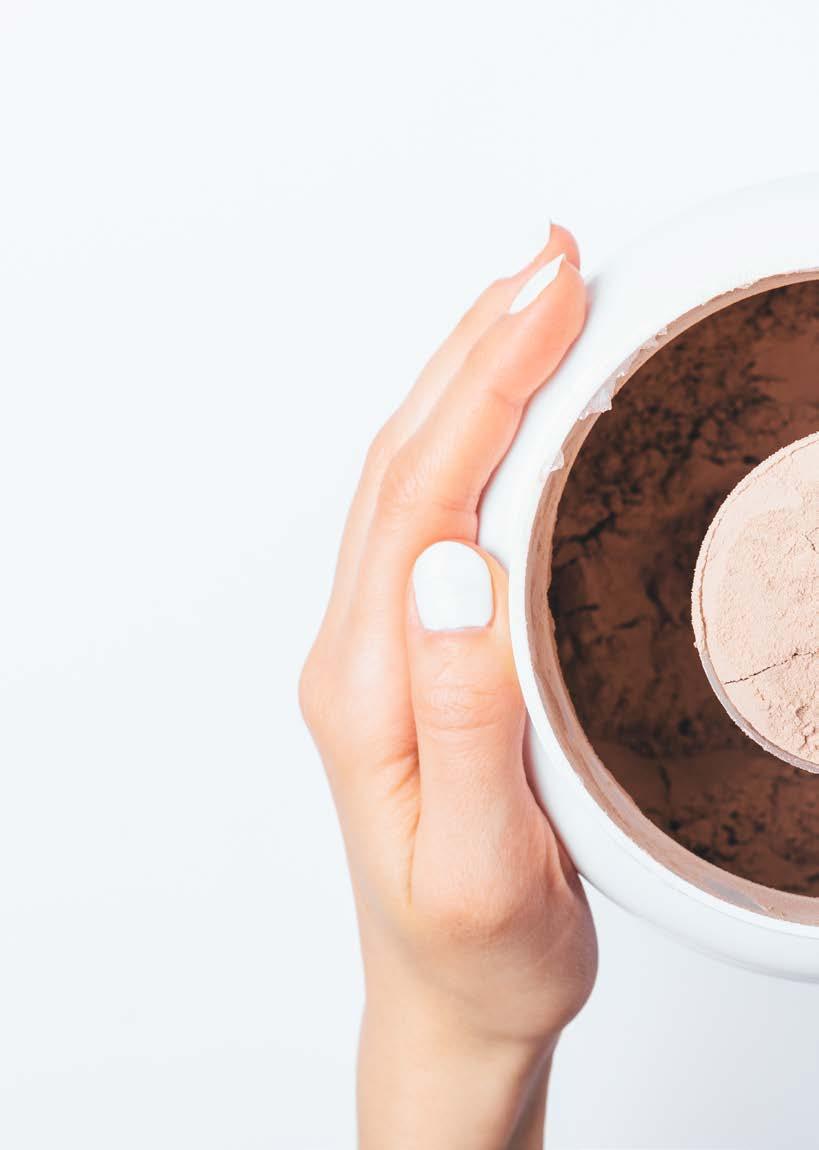
Advertisement

WRITTEN BY KATELYN SWALLOW
Supplementation can play a significant role in making sure you feel and perform your best in the gym and in life. But pick a poorly engineered product, and the research shows you’ll only be wasting your hard-earned coin. We asked the experts for their top supp recommendations for active women, and how to spot a winning product from a pretender.
CREATINE 1
MAIN GOALS: Improved training performance, muscle hypertrophy
PRIME CANDIDATES: Barbell enthusiasts
The details: Creatine is a substance that exists naturally in the body, helping to fuel your muscles, particularly during heavy lifts and high-intensity work. One of the most well-researched supplements, it most commonly presents as a powder to be mixed with liquid pre-training, and has been shown to have serious benefits for power and strength outputs.
One recent review published in the journal Molecular and Cellular Biochemistry looked at over 500 studies involving creatine to find that even shortterm supplementation increased strength by up to 15 per cent, and improved single effort sprint performance by about five per cent.

Take this much: Nutritionist, Trainer and Sports Scientist Rudy Mawer (rudymawer.com) suggests taking one 5g scoop per day.
What to look for: While there are numerous strains of creatine on the market (all claiming superior solubility or advantages), nearly all of the studies that demonstrate creatine’s effectiveness use creatine monohydrate. This particular type of creatine has been used for decades and is considered in many circles the ‘original and the best’. Purity is key to effectiveness, so only buy creatine from reputable brands with limited fillers.
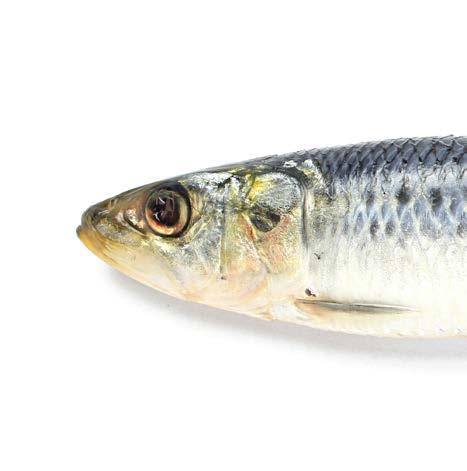

The details: Omega-3 polyunsaturated fatty acids are a family of essential fatty acids that play an important role in the way the membranes of our cells function. “I like to call it a natural, life-long insurance plan. Omega-3 supplementation can help lower the risk of heart and metabolic diseases, along with improving brain and joint health,” says Mawer.
It also happens to be one of the fatty acids the body is unable to synthesise on its own, so it needs to be consumed via your diet. The problem? It’s nearly impossible to ingest the optimal levels through nutrition alone. “If you eat two to three portions of oily fish per day, you may be hitting the required dose,” says Mawer. Not overly practical and you’ll likely smash your fat macros.
That’s where supplementation comes in. OMEGA-3 MAIN GOALS: Cell and joint health, hormone regulation, general wellbeing PRIME CANDIDATES: Everyone and anyone Take this much: While recommendations by key health organisations vary, Co-Founder of Flex Success and Sports Nutritionist Dean McKillop (flexsuccess.com.au) says a lot of the research now points to needing about 2.4g of combined EPA and DHA (the two fatty acids that make up omega-3) per day. “Most standardised fish oil tablets are 1,000mg, which will yield anywhere between 500mg and 900mg of combined EPA and DHA, depending on the concentration of active ingredients,” he says. This means you’ll need to take three to five tablets, depending on the product you choose. What to look for: The levels of EPA and DHA in each tablet. “Cheaper brands will sell 1g of omega-3 with only 300mg to 400mg of combined EPA and DHA. In other words, only around 30 per cent of the tablet will have the crucial fatty acids,” says Mawer.
Opt for higher quality supps, with at least 700mg of combined EPA and DHA, and make sure you check the use-by date. “Omega-3s are prone to going rancid. Once they go bad, they will have a foul smell and become less potent or even harmful,” warns Nutritionist and female hormone specialist, Jenn Pike. 2
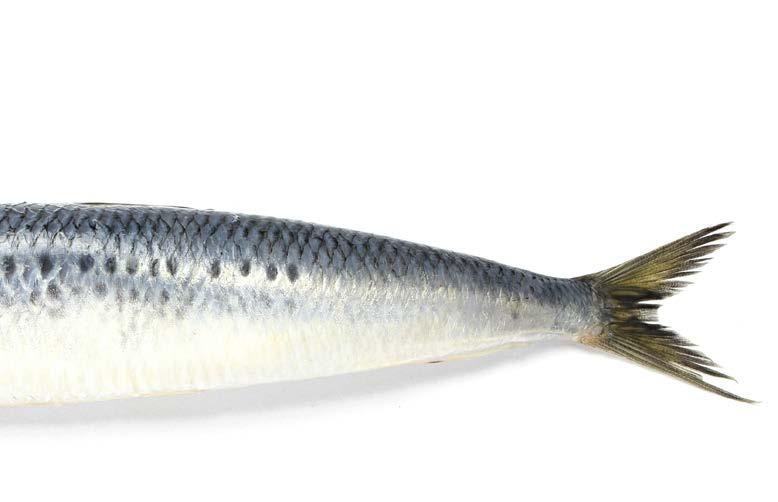
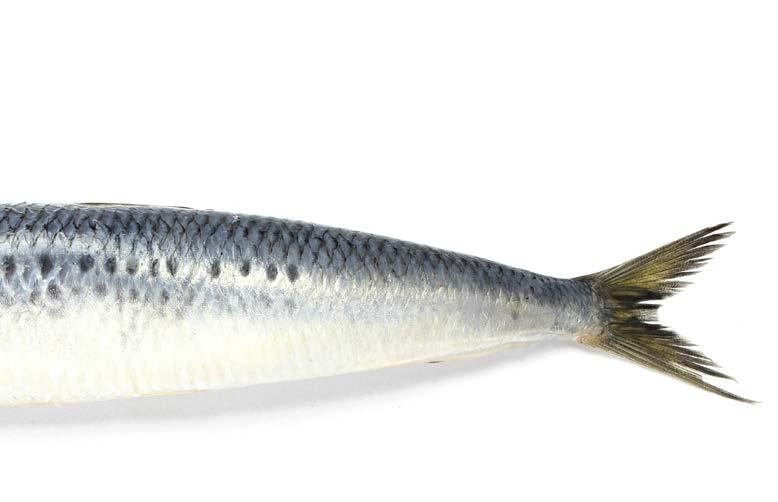
GO FISH: You would have to eat up to three servings of fish a day to even come close to hitting recommended levels of omega-3.
3PROBIOTICS
MAIN GOALS: General health, immune function, fat loss, training performance
PRIME CANDIDATES: Everyone (just check with your doctor before taking if you have any pre-existing gut issues)
The details: Probiotics are a form of live bacteria found naturally in the gut, aiding in digestion and assimilation of nutrients from the foods we eat. When particular strains of such bacteria are taken in high enough amounts as a supplement, some research has shown a host of benefits, including aiding gym performance, strengthening the immune system, and improving general wellbeing and body composition.
“In the last couple of decades, fascinating research has come out linking our gut health to almost every aspect of human life and even disease risk, how we store and lose fat, and how we perform or add muscle,” says Mawer.
However, McKillop is not so convinced. “We can’t determine where the microbiota need support within the entire gastrointestinal tract, and probiotics only account for the gut. For the most part, probiotics are like throwing a dart at a dart board while blinded,” he says. Take this much: Mawer suggests 10 to 15 billion CFU (colony forming units) per day is ideal, taken with a meal. What to look for: Similar to omega-3, dosage is important. Most commercial brands or yoghurt-based probiotics have one billion CFU or less, warns Mawer.

“It’s also vitally important to look out for the key strains of bacteria, as there are thousands out there. There are quite a few that have beneficial research, but three of the most popular are: Lactobacillus acidophilus, Lactobacillus GG and Bifidobacterium infantis,” he adds. Avoid brands containing artificial fillers, flavours or dairy.
GREENS 4
MAIN GOALS: Fill nutritional gaps, improved performance, support immune health
PRIME CANDIDATES: Regular gym-goers and dieters

The details: No matter how varied your diet, it’s often unrealistic to consume the volume of food required to ingest all the vitamins and minerals you need for optimal health and performance. “Research has shown most of us have our ‘go-to’ 20 foods that make up 90 per cent of our diet,” explains Mawer. “Because every different type of fruit and vegetable contains different vitamins and minerals, we often under consume some of them.”
While multivitamins were once used to fill dietary gaps, recent research points to their ineffectiveness — and, in Pike’s experience, their potential for harm. “I work with a huge population of women suffering from digestive issues – gas, bloating, and constipation, to name a few – and I find the more pills and tablets, especially multivitamins, they try to add to their daily regime, the worse their digestion becomes,” she says. A well-designed greens powder mixed with water or in a smoothie carries similar perks to a multivitamin without any of the digestive drawbacks. One caveat though – research into their efficacy is limited.
Take this much: Dosages will depend on the product you choose, but one scoop of greens powder per day is usually sufficient. “Take greens in the morning or around midday rather than at night, as they can be stimulating to your bowels and energy levels,” adds Pike.
Just don’t be lulled into a false sense of security. Green drinks should supplement your intake of fruit and vegetables rather than replace it, and they aren’t always engineered for optimal absorption.
What to look for: Green supps should host a wide variety of minerals and nutrients, sourced predominantly from organic, plant-based whole foods. Think upwards of 20 different foods, including wheatgrass, spinach, broccoli and kale.
Look for a product that also contains aquatic plants and algae, such as spirulina and chlorella. These modern ‘superfoods’ have been shown to fight a multitude of major lifestyle-related diseases, help to manage blood glucose levels, and boost your body’s antioxidant levels to help fight free radicals (the nasty unstable molecules that occur naturally from metabolic processes, but cause damage to your cells). A 2010 study published in Nutrition found that participants who took 6.3g of chlorella per day achieved a 44.4 per cent boost in vitamin C and 15.7 per cent boost in vitamin E in just six weeks.
CHILL PILLS: Magnesium plays a role in mood, sleep, and muscle relaxation.
ZMA OR MAGNESIUM 5

MAIN GOALS: Recovery PRIME CANDIDATES: Those suffering from muscle soreness, sleepless nights and stress
The details: ZMA supps contain both zinc and magnesium – two vital minerals involved in over 500 chemical processes in the body. “They are both particularly important for active women, as naturally their needs are amplified, and both minerals play a role in that cellular repair process,” says Mawer.
While Pike doesn’t necessarily recommend ZMA, she acknowledges the importance of magnesium. “Magnesium is one of our most critically needed minerals, but also one of our most deficient. It helps with maintaining a healthy mood, sleep, hormone balance, and reducing symptoms of PMS and menstrual cramps,” says Pike. “The only issue that arises from too much magnesium is looser bowels. If you notice this, keep at the lower end of dosing – around 200mg.”
Take this much: Women need slightly less than their male counterpart – approximately 300mg of magnesium and 20mg of zinc is sufficient.
What to look for: “Look for ‘chelated’ versions, as they are more easily absorbed,” notes McKillop. They also shouldn’t cost you an arm and a leg. “As they are raw ingredients, it’s normally a pretty easy purchase without complex rules or tricks, even commercially from mainstream brands,” says Mawer. ZMA should be relatively cheap, so consider any major price mark-ups a red flag. S
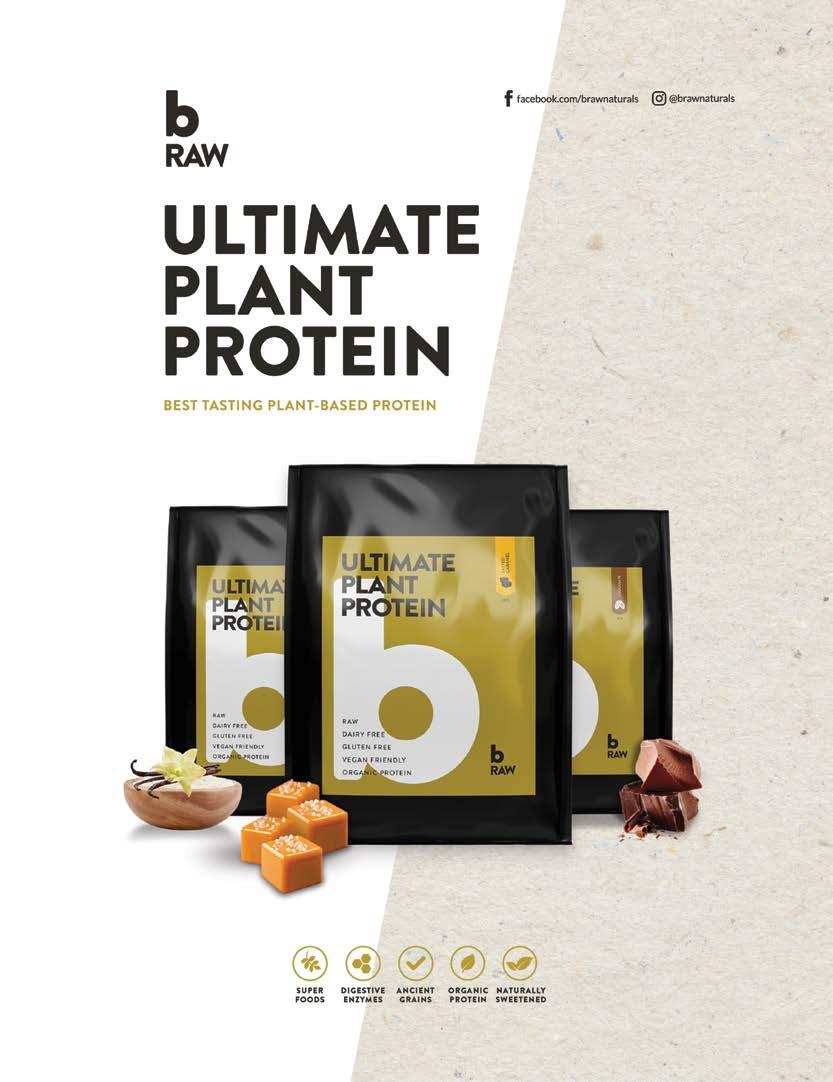

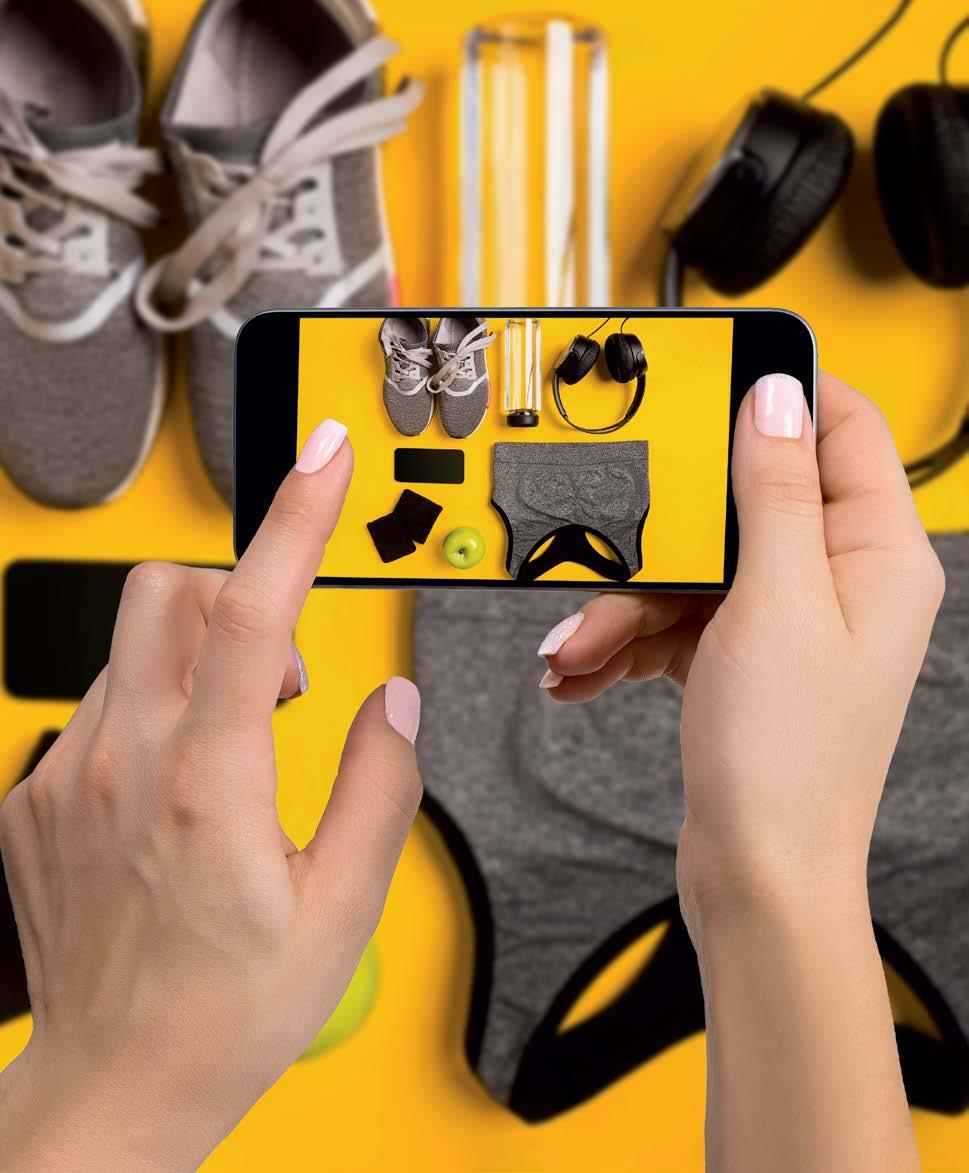
OUT OF


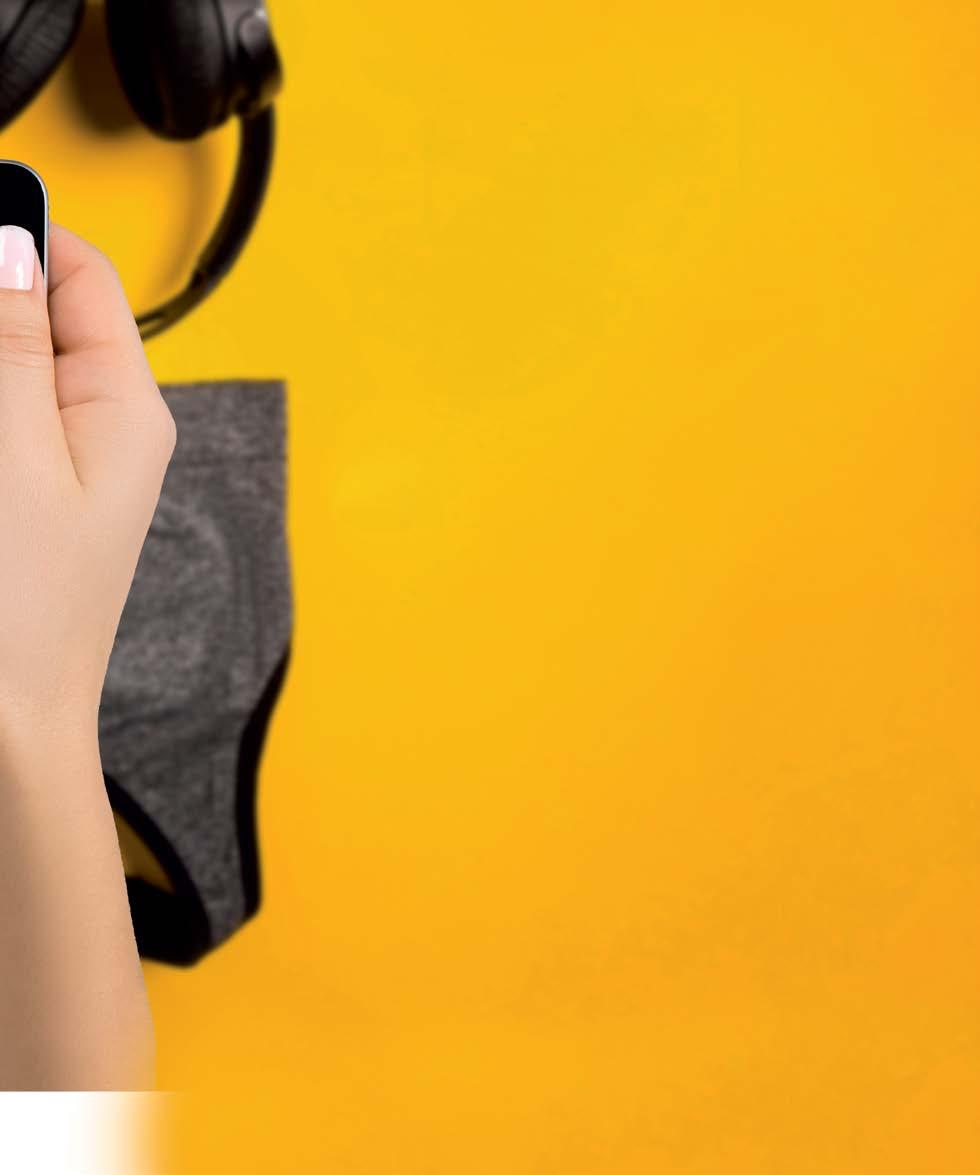
In the age of uber-connectivity, you may find yourself losing a fighting battle against the pull of technology. Recent research suggests Australians check their phone up to 130 times per day. This dependence leads to a lack of productivity, which has been shown to impact everything from your sense of wellbeing to your results in the gym, leading us to ask: are we ready for a tech detox? WRITTEN BY RACHEL DEBLING
PING.
It’s a sound most of us are painfully familiar with, experiencing it dozens of times per day and inches away from our itchy trigger fingers. It’s a noise that can effortlessly pull your attention away from deadlines, quality time with friends and family, and even the road while driving. For all they do to make your life easier, your smartphone also has an influence over you that’s as complicated as the technology poured into its ergonomic frames. While they enable us to do more work on the go, our ability to connect to anyone, anywhere, anytime forms a paradox: the more we are able to do, the less we are able to accomplish because the todo list never ends. And even though the office may be the obvious place where distraction can sap your work ethic, it’s not exclusive to the nine to five grind. A lack of productivity can affect your sleep and level of anxiety, both of which have been linked to health threats such as heart disease, obesity, and mood disorders, making it a more serious issue than an unchecked agenda. Nor is it a technology-specific problem – productivity sappers also include a packed-to-the-brim schedule or the absence of strong leadership in a work environment. Whether your focus is being pulled by the glow of a screen or yet another team meeting that could have been an email, one thing is certain – for your sake and the sake of those around you, building a defence against the worst offenders is a necessary (though sometimes painful) process.
Reframing your priorities
Experts say this phenomenon lies in how we frame what it means to be productive in the 21st century. “The difference between busyness and productivity is that they are often opposites because busyness leads us to accomplish fewer things of importance,” notes Chris Bailey, author of Hyperfocus: How to Be More Productive in a World of Distraction and The Productivity Project . This happens when the quantity of our actions takes precedence over the quality of them.
Technology, specifically the smartphone, is a powerful timewaster and it’s easier than ever to fall victim to its allure. Though not classified in the Diagnostic and Statistical Manual of Mental Disorders , there are experts who champion that technology addiction be recognised as a mental disorder. In response to this theory, some companies are taking the threat of technology’s potentially addictive nature seriously and addressing it at the source. Last year, Google announced it would be tackling the problem head-on with smartphone features that allow users to better track how much time they are losing to their screen. Other brands have followed a similar path. Apple, for example, had many customers reeling from the discovery of their reliance on tech when it introduced a new report that tracks what users are doing on their iPhone, and for how long. These types of tools can be used to shift your focus back to important tasks, ultimately making it more difficult to succumb to the temptations of tech. As Michelle Clark, PhD, Executive Vice President of Psychological Associates, explains, “I think most people underestimate the amount of time they have lost to the unproductive use of their phones and other screens, and that most people feel like they are busier than they want to be, which negatively impacts their sleep, their exercise, and their time with their family.” Of course, technology has many benefits that far outweigh the negatives. For some, it has paid off in the form of remote work opportunities that would have not been possible five or 10 years ago. This can result in greater job satisfaction and work-life balance. Still, hyperconnectivity and opportunities to work from home can mean you wind up working more, not less. And whether you’re working remotely or scrolling mindlessly, it results in being less present in the moment.
A WELCOME DISTRACTION Allowing your attention to be pulled away from the task at hand isn’t always bad: music is one diversion that pushes exercisers to greater limits, as shown in study after study.
But it’s not a one-sizefits-all solution. British sports physiologists found that rap is the best genre to run to due to its average of 75 to 95 beats per minute, dance is the ideal tempo for strength training, and though some may disagree, they recommend that rock be kept on the sidelines due to its irregular musical patterns.


Distraction by design Your attention is a commodity of tech companies, so their wares are often designed to draw it away from what you are currently doing and back to their revenuegenerating product. Think about all of the times you’ve heard that familiar ping and automatically turned your concentration to the screen. Mitchell Lee Marks, PhD, a Professor at San Francisco State University in the US and an expert in corporate culture and organisational effectiveness, notes that this reflex is an example of classical conditioning, as exemplified by Pavlov’s famous bell experiment. It’s this same principle that
Brain drain: Our brains release dopamine as a reward in response to new stimulus, such as a text or notification.
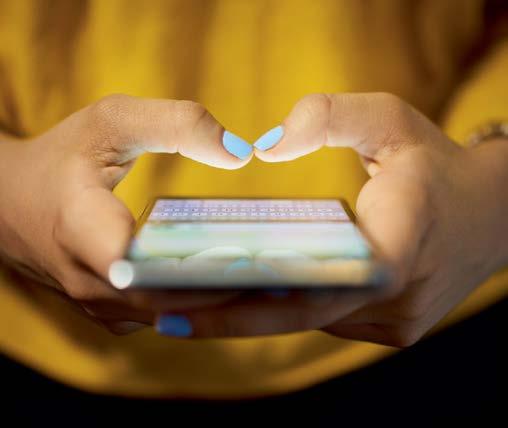
keeps us reaching for our phones time and time again.
Smartphone manufacturers and app designers also aim to trigger inherent internal cues that have been developed in humans over thousands of years with features such as push notifications. As Bailey explains, the human brain is attracted to things that are new and novel, releasing dopamine as a reward when we shift our attention to something that, even if not immediately important, is different than what we are currently experiencing. This novelty bias is an important and necessary tool that has helped humanity grow, evolve and thrive over the centuries. But while our ancient ancestors had to deal with threats such as large animal predators, our enemy is now an email alert letting you know that there’s a sale on, this weekend only.
Honing it back in
Erratic focus, whether or not it is driven by demanding tech, can influence the results of your workouts, too. Though some studies have found little evidence that distraction negatively affects exercise performance, most trainers, as well as our experts, agree that exercising while texting or scrolling can cause you to put in less effort than you would without the interference. A simple adjustment such as setting your phone to ‘do not disturb’ mode during your workout is a great way to keep your focus on your sweat session and not on Snapchat. But how else can we stay focused amid the hustle and bustle of everyday life, whether it’s at work, with your family, or in the gym? It may sound obvious, but quantitative objectives are the secret weapon of effective workers. Instead of saying, for example, that you’ll start to eat better this Monday, writing down the specifics – what you will buy at the grocery store and what meals you will make – is the best way to ensure that it will happen. And research supports the belief that simple, mindful actions such as creating and checking lists reap the most benefits for the time-poor but goal-orientated. One study from Psychologist Gail Matthews found that participants who wrote down their objectives were 33 per cent more likely to reach their goals at the end of four weeks than those who simply pondered them.
Your productivity also hinges on what you do when you aren’t working. Just as you would when exercising at high intensities, rest and recovery are imperative for getting quality, results-driven work done during your time on the clock. Marks says that whether it’s shutting down your email in the hours following your workday or by taking that holiday time you are owed, carving out ‘me time’ honours focus.
In the end, our experts argue you must make purposeful changes in how you work, follow your new protocol, and stick to it. “Here’s the thing about productivity: for every minute you spend reading about it, you have to give that time back and then some, or you are just continuing to be what I like to call ‘productivity poor’,” Bailey cautions. The best thing you can do is pre-emptively set up a process that works for you and removes your main distractions – and that may mean breaking up with your phone, at least during the hours your attention should be elsewhere.
One study found that participants who wrote down their objectives were 33 per cent more likely to reach their goals than those who simply pondered them.
FIGHTING DISTRACTION Need a starting point for staying on task? These tips from Chris Bailey, author of Hyperfocus, are for you.
If it doesn’t impact your job, delete the email app from your phone or unlink it from your work email account.
Never attend a meeting without an agenda and insist that attendees stick to it.
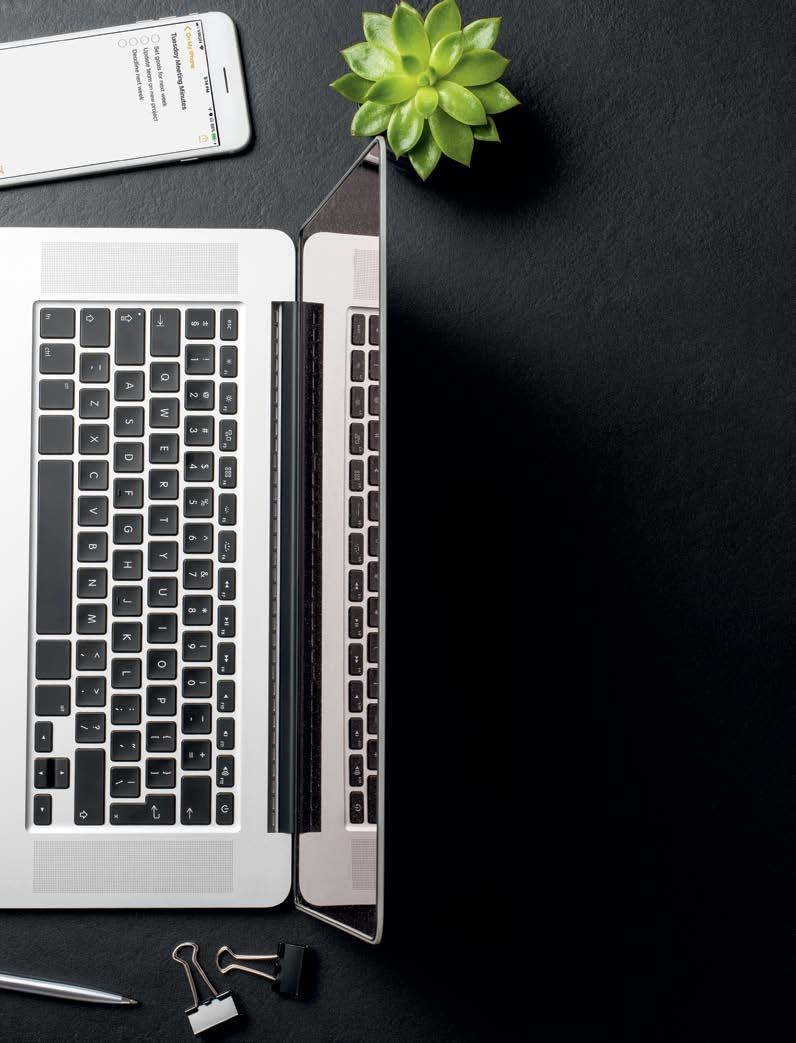
Use your phone’s settings to set your screen to grayscale. This prevents visual cues from pulling your attention away.
Adjust the notification settings on your phone and in your social media accounts – you don’t necessarily need to be reminded when someone comments on a photo of you.
Apple users can set time limits for apps. Use this feature in conjunction with your screen time reports to restrict your access to the worst offenders. S
Women Watch STRONG to

Setting goals to be fitter, stronger and leaner in the New Year is all well and good, but do you ever set a target to be happier? We spoke to some of Instagram’s most body-positive fitness influencers about their own struggles with the mirror and their tips for loving ourselves more – as we are – in 2020.
AMY SHEPPARD Singer and Songwriter @amysheppardpie // @wearesheppard
An uber-successful singer and songwriter for Australian pop band Sheppard, this fitness advocate and brave body-positive soldier is also the founder of the #KISSMYFATASS movement that took over our social feed this year. Head over to her Insta page to see pics of her body as is – lumps, bumps and whatever else – and her stark reminders to be kind to yourself and others, always.
MY DEFINITION OF STRONG Being a strong woman is about resilience. It’s about being able to hold a smile through the good and the bad and knowing you can make it through.
BODY IMAGE AND SOCIAL MEDIA Social media is extremely detrimental to the body image of women of all ages. With followers being used as currency and instant gratification for the way you look, it’s no wonder people only post their highlight reel. Eating disorders, low self-esteem and suicide are on the rise, and people are lonelier than ever before. My view is that it doesn’t have to be this way: social media can be used to do amazing things. Positive role models are desperately needed on social media, and I hope that my profile can be a breath of fresh air for anyone struggling with keeping up appearances online.
IT HAPPENED TO ME I grew up as an overweight child and was subjected to bullying from a young age. Being in a successful band only exacerbated my body image issues. People would comment about any body weight changes, and
Too skinny, too curvy, too muscly – Boehm is saying enough is enough. This boss-chick and Online Trainer has not only overcome a debilitating eating disorder, but also the wrath of online trolls and unthinking people who dug at her muscular form or gave her backhanded compliments. Now, along with her educational content and inspirational gym pics, she posts openly and honestly about her experiences in the social media spotlight. ASHLEIGH BOEHM Strength and Conditioning Coach chickswholift.com.au // @ashleigh_chickswholift

I always worried about what people thought of me. At the start of this year, I became fed up with trying to be the perfect version of a ‘pop star’. I was only ever posting my most flattering photos online and I was in a miserable relationship with yoyo dieting. I decided to post a series of photos of myself as I really was – I exposed my lumps, bumps and rolls, and used the hashtag #KISSMYFATASS. Before I knew it, women from all around the world were joining me in sharing their realistic bikini photos. I no longer need to chase perfection and I don’t compare my body to other bodies I see online.
BODY POSITIVE 2020 Unfollow anyone who makes you feel bad about yourself. I only follow women who are inspiring or women I can learn something from.
DAY ON A PLATE I love poached eggs and salmon on sourdough toast after my morning workout, and for lunch I often have BBQ chicken, cheese slices, avocado and spinach. For afternoon tea, I enjoy fruit or crackers with cheese and tomato. I get more creative at dinner, with chicken, cauliflower fried rice and creamy mushroom pasta one of my favourite meals.
MY DEFINITION OF STRONG Strength takes many forms: there’s the physical strength built in the gym and then there’s the psychological strength that is forged through discipline and consistent hard work. But for me, true strength is about facing up to your lies and calling yourself out on your own bull****. It’s having the courage to be vulnerable and admit your weaknesses, and the tenacity to take control of your choices.
BODY IMAGE AND SOCIAL MEDIA Statistics show that the suicide rate among teens and young women has almost tripled in alignment with the increase of social media use. There is no doubt that we’re all feeling the pressure to achieve a certain (largely unachievable) aesthetic. Thankfully, this is being recognised and we’re beginning to realise health and fitness come in many forms – it’s not just about having abs and a booty!
IT HAPPENED TO ME I was a gymnast from the age of five, so my body has always been a focus. The pressure to be perfect manifested as anorexia and bulimia throughout my teens and early 20s, robbing me of many happy life experiences. I still encounter the residual effects of believing how I looked was the most important thing about me. It wasn’t until I began strength training that I truly appreciated my body for what it could do and I began trying to take up more space in this world, rather than less. I did begin to receive criticism for being ‘un-feminine’ or ‘too big’, but I don’t choose to listen to those voices anymore.
BODY POSITIVE 2020 I am a firm believer that you’re the average of the five people you spend the most time with. Be careful who you allow in to your inner circle and surround yourself with others who are focused on health, growth and selfacceptance. This also goes for social media – you are what you absorb.
DAY ON A PLATE My eating philosophy is highly dependent on my training goal. When I’m in a fat loss phase I will track macros, and when I’m focusing on performance I will eat intuitively. The food choices tend to be similar, so the difference is in the level of structure. A typical day looks like: Pre-training (7am): Black coffee. Meal 1 (11am): Protein oats with blueberries. Meal 2 (3pm): Turkey mince, black bean noodles, mixed vegies, herbs and spices. Meal 3 (7pm): Steak or fish with roast sweet potato and greens. Meal 4 (8pm): Egg white and banana protein pancakes with berries.
KARINA IRBY Founder and Director of Moana Bikini moanabikini.com // @karinairby
What to do when the drab block colour bikinis on the market are no longer tickling your fancy? Create your own bright, fun, patterned and body-positive bikini line, that’s what – and rack up over a million Insta followers while you’re at it. The founder of Moana Bikini flaunts her curves with pride, along with her eczema flare-ups and cellulite in a raw, honest way we can’t get enough of.
MY DEFINITION OF STRONG Being a strong woman is about supporting other women and never tearing them down. Being able to give compliments when they’re due – without jealousy or envy – and being willing to put yourself out there, unafraid to make mistakes.
BODY IMAGE AND SOCIAL MEDIA

I see social media as much more than a channel to sell products. Connecting with other people who are struggling with the same or different problems is key to dealing with your own issues and struggles. Just like you can curate the experiences you have in real life, you should be curating your social feeds in a way that makes you feel good about yourself. We should be following people who inspire us.
IT HAPPENED TO ME In my childhood and teen years, I suffered from eczema, and occasionally I still get flare-ups. As a child or adolescent, this was an excuse for others to pick on me and call me names – ‘scabby legs’, for example.
I have always had quite a round booty and thicker legs and calves. Even though a curvier physique is becoming more sought after, it wasn’t always that way! To this day, I still have people saying I look weird or unnatural, or saying that I’ve had cosmetic surgery, which is outrageous. People who hide behind a screen think they have the right to say hurtful and false things.
BODY POSITIVE 2020
Realise you’re not alone. Anything you’re feeling or thinking or struggling with, you can be sure that someone else is dealing with exactly the same thoughts and emotions. It’s okay to feel ‘off’ sometimes – it’s part of growing and accepting yourself. Self-love is a journey.
DAY ON A PLATE
Post-workout: Protein shake with protein powder, half a cup of berries, one cup of ice, one tablespoon of chia seeds and two cups of almond milk. Lunch: Salad sandwiches on sourdough, quinoa salad bowls or vegie sticks with hummus. Dinner: Butter chicken, chicken and salad tacos, prawn laksa, slow-cooked beef stroganoff, baked fish with salad or sweet potato nachos. Snacks: Chamomile tea.
SAMI ROSE Personal Trainer and Sports Nutrition Specialist samirosefitness.com // @samirosefitness
Following her own health transformation many moons ago, Rose wanted to teach others how to become fitter and stronger in an enjoyable and sustainable way. After completing her trainer qualification in early 2015, she has grown her business and social media account, working with women all over the world to adopt a balanced and realistic approach to diet and exercise. We personally love her Instagram feed’s mix of pro shots and unedited, everyday selfies, and her open and honest chats about weight fluctuations post-bikini comps.
MY DEFINITION OF STRONG Being empowered – physically and mentally. Women should feel they’re capable of tackling any goal because we are! To me, a strong woman is one who is unafraid to back herself and work towards what she wants, whether it be fitness, business or relationship goals, or how she wants to feel within herself.
BODY IMAGE AND SOCIAL MEDIA I think times are changing on social media and it’s amazing! A few years ago, Instagram was about the ‘perfect’ image. Now, people use social media to connect, share stories and talk openly about their struggles. It’s less of a highlight reel, and it’s nice to see more people sharing their fitness journeys and their unedited photos. I hope the fitness industry continues showing people that ‘fitness’ isn’t just one look, and everyone deserves to feel comfortable in their body.
IT HAPPENED TO ME
I used to get a lot of online trolling – when I was lean during my competing days (anonymous accounts would call me ‘disgusting’) and then when I was gaining weight afterwards (people suggesting I was ‘lazy and fat’, and questioning how I could be a personal trainer). It took me a long time to accept my body, which was 12 to 15 kilograms heavier than what I was used to.
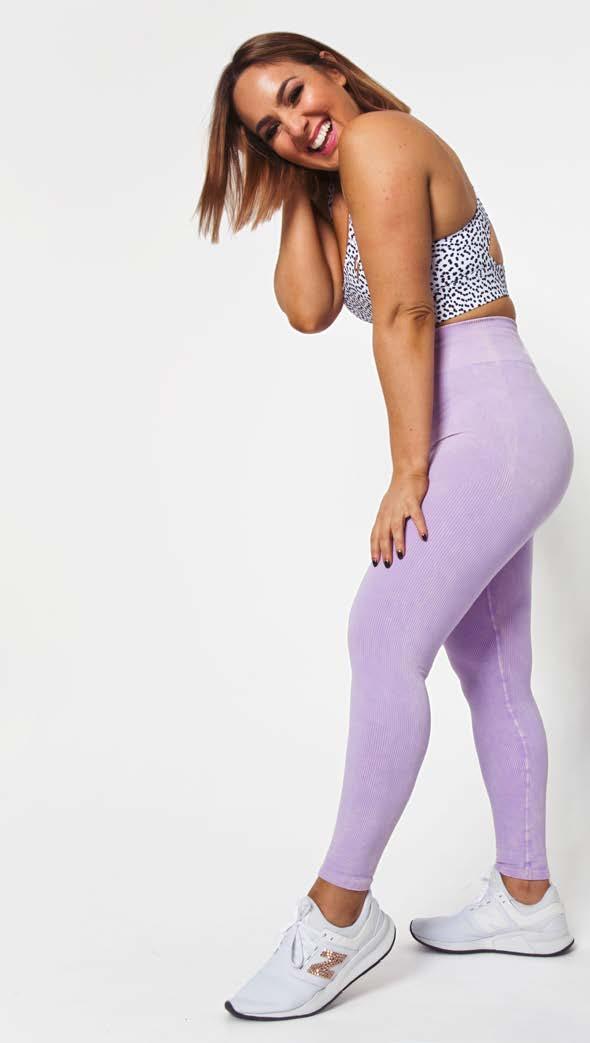
BODY POSITIVE 2020
You are more than your body! I used to pressure myself to look a certain way to impress others. I thought I’d be more liked, more successful in my business, and more popular on social media if I ‘looked the part’. But since taking a more relaxed approach, I haven’t experienced any of the negatives I was so fearful of – my business is thriving and my social media account continues to grow. I now appreciate aspects of myself other than appearance, and I allow those qualities to shine, and that’s what draws people to me – not what my body looks like.
DAY ON A PLATE
Most days I eat nutrient-dense meals that include plenty of protein and vegetables, but I like to change it up and make it fun. I love chicken and vegetable stir fry with satay or teriyaki sauce, and I finish every day with a dessert – usually low-fat ice-cream. S




